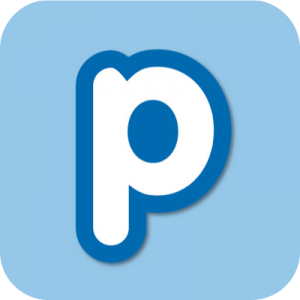 Recently, when looking for a new tool that would work across multiple platforms (Windows, Mac, & Chromebook in particular), I stumbled on Popplet. While I had used the free Popplet Lite iPad app as a mindmapping tool, I had been unaware of the truly awesome potential for using Popplet on the web!
Recently, when looking for a new tool that would work across multiple platforms (Windows, Mac, & Chromebook in particular), I stumbled on Popplet. While I had used the free Popplet Lite iPad app as a mindmapping tool, I had been unaware of the truly awesome potential for using Popplet on the web!
At first glance, Popplet seems like most other mindmapping tools such as Inspiration, Bubbl.us, or MindMeister. However, it has three critical features that separate it from the rest (on top of being FREE).
First, not only can you create objects with text, but Popples can also include links, drawing, images from either your computer or the web, and video from either YouTube or Vimeo. In fact, if you are working on Popplet from a Chromebook, you can even insert images directly from your Google Drive account!
Next, even with a free account, Popples can be shared in much the same way as a Google Doc, allowing for both synchronous and asynchronous editing and creating. This means that they could be used for group discussion, collaborative brainstorming, or even as a backchannel.
Finally, in addition to sharing directly with other collaborators, completed Popples can be published with a link or an embed code - making it incredibly easy to share via a web site, wiki, blog, or even a Learning Management Solution such as Edmodo or Schoology.
Uses for Popplet in the Classroom
Beyond using it as a mindmapping or graphic organizer tool, students could use Popplet to illustrate the steps of a process or sequence, such as a Popplet lab report showing reactions, steps, processes, and procedures. Similarly, Popplet could become an interactive timeline - complete with digital artifacts such as video and images from primary sources. Given the ability to incorporate links, images, and video, Popplet could even make a for a highly visual student portfolio tool.
From a teacher’s perspective, imagine posting an image, video, or piece of text and then asking students to brainstorm their ideas based on what they see or experience. Think about the potential for visual, linked, collaborative discussions. An English teacher could ask students to respond to a discussion prompt, connecting ideas off of the prompt as well as their peers. A History teacher might post a political cartoon and ask for students to respond with their own drawings, and a math teacher might pose a problem and ask students to submit their solutions.
When using Popplet with a group of teachers in a recent workshop, one participant realized that it could be an amazing tool for documenting student learning as part of the new teacher evaluation process. Popplet could be a curation tool for displaying student work as it relates to a specific unit or project as well as a student portfolio option - visually linking student learning artifacts to the desired objectives.
For even more ideas, check out the Popplet below that I created while brainstorming all of the possibilities.
To learn more about Popplet and other web tools, Beth will be leading workshops this summer in 6 cities across the country.
This post first appeared on Free Technology for Teachers.

